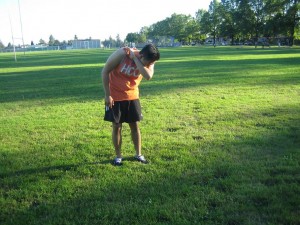Styes and chalazia are lumps in or along the edge of an eyelid and can be painful or annoying but sometimes go away on their own without treatment. A stye is an infection that causes a red and tender lump in the eyelid, and mostly occurs along the edge of the eyelid.
A stye that develops inside the eyelid is called an internal hordeolum. A chalazion is a lump found in the eyelid and it looks like a stye, but they are larger and do not cause pain. Styes and chalazia can be related to blepharitis that causes inflammation of the eyelids.
Styes or hordeolum is described as a red and painful lump that occurs close to the edges of the eyelids that looks similar to a pimple or boils. They are sometimes filled with pus and forms on the outside of the eye but sometimes they can also occur inside the eyelid. Proper care must be observed to prevent infection. You can enroll in a course on first aid today so that you know the appropriate measures to carry out.

Causes of stye or chalazion
Styes are caused by a bacterial infection, especially the bacterium staphylococcus and usually develop in the root or follicle of the eyelashes. An internal hordeolum is triggered by an infection of the oil glands found inside the eyelids.
Chalazion forms when oil gland found in the eyelid becomes blocked and if the internal hordeolum does not drain and heal, it can lead into a chalazion.
Symptoms of stye and chalazia
A stye begins as a red bump that looks like a pimple found along the edge of the eyelid, and then the eye becomes swollen, painful, watery eyes, and there is crusting around the eyelid. The swelling lasts about 3 days before they open and drain and takes about a week to heal.
A chalazion begins as lump or cyst found under the skin of the eyelid and it does not cause pain. They grow very slowly and if it becomes large, it can affect the vision and if there is inflammation and swelling it can spread to the areas around the eye. Chalazia can heal by itself in a month without treatment.
Some factors that increase the risk of eyelid infection include the following:
- Changing contact lenses without thoroughly washing the hands first and failing to disinfect the lenses before putting into the eye.
- Using old and expired cosmetics and leaving eye makeup on overnight
Treatment and home remedies
- Apply warm and wet compress on the affected areas for 5-10 minutes, at least 3-6 times a day for faster healing and helping open blocked pores to drain and start to heal.
- Apply an over-the-counter ointment solution for stye or medicated pads.
- Avoid squeezing or opening the stye or chalazion, it will open up on its own.
- Avoid using eye makeup or contact lenses if the area is not yet healed.
